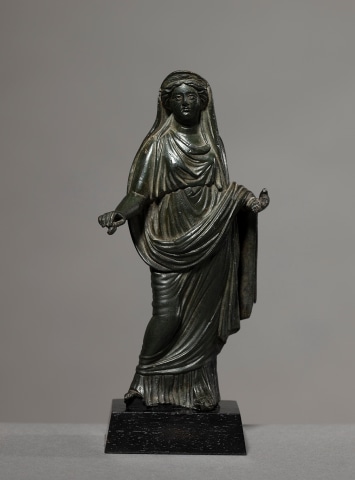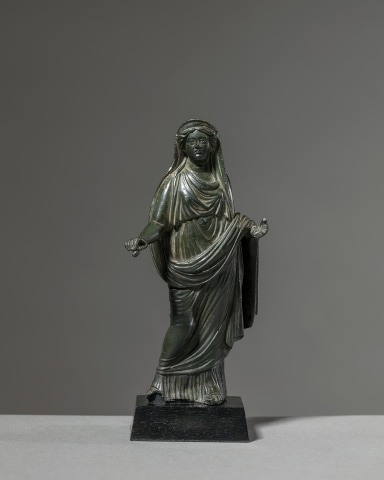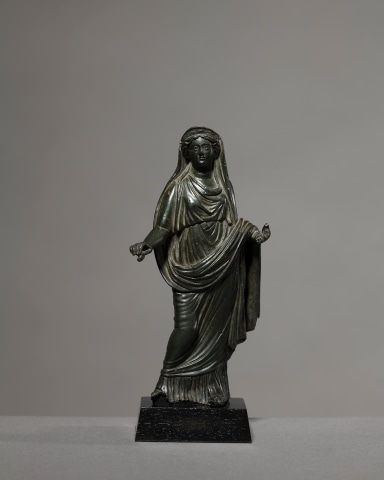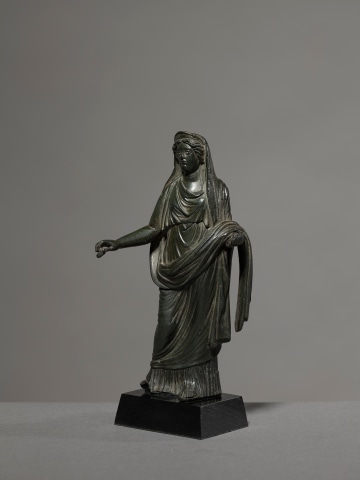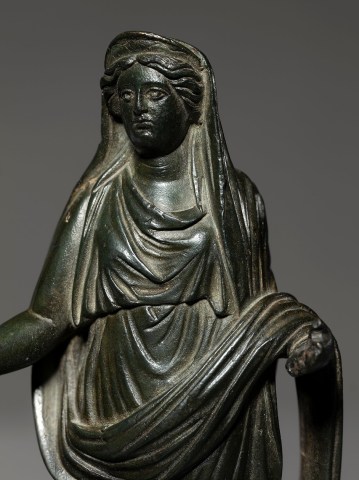Roman statuette of Juno, c.1st century AD
Bronze
Height: 16.6cm
11497 TA
Further images
Statuette of a heavily draped female figure, the stephane (diadem) and the placement of the drapery denote her as Juno, the Roman equivalent of Hera. Her left hand is held...
Statuette of a heavily draped female figure, the stephane (diadem) and the placement of the drapery denote her as Juno, the Roman equivalent of Hera. Her left hand is held palm up, the right holding a round object with thumb and forefinger. She wears a belted, ankle-length chiton and a thick himation draped over her head and slung over her left forearm. Her wavy, centrally-parted hair is held back from her face by a tall stephane. She stands contrapposto, the movement in the drapery creating a great sense of elegance and exuberance. Her face holds a serenity about it, with rounded jawline and soft, full features. Right foot and fingers from left hand are missing. A few small holes on the back with minor worn areas touched in.
Juno was Queen of the gods, and wife of Jupiter. She was the goddess of marriage and birth, and was a formidable figure in mythology.
She was widely worshipped in Rome, and in the 4th century BC a temple was built to Juno Moneta “the Warner” on the Capitoline Hill in Rome. It later housed the Roman mint, thus the words “mint” and “money” derive from her epithet Moneta.
The quality of this statuettes points to an imperial Roman production. It is among the best known images of Juno.
Juno was Queen of the gods, and wife of Jupiter. She was the goddess of marriage and birth, and was a formidable figure in mythology.
She was widely worshipped in Rome, and in the 4th century BC a temple was built to Juno Moneta “the Warner” on the Capitoline Hill in Rome. It later housed the Roman mint, thus the words “mint” and “money” derive from her epithet Moneta.
The quality of this statuettes points to an imperial Roman production. It is among the best known images of Juno.
Provenance
With Félix Feuardent (1819-1907)Private collection, France
